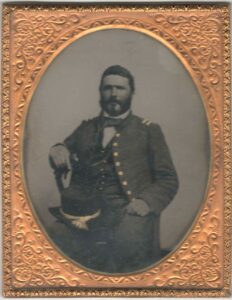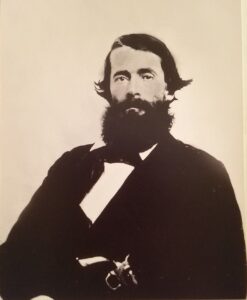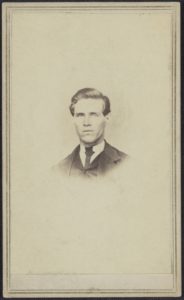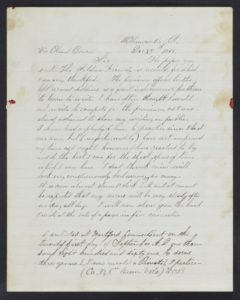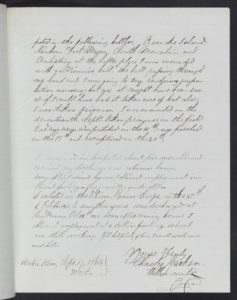Major James H Dingle, Hampton Legion Infantry (1862)
30 June 2024
Going by Hervey, and sometimes seen as Junior, probably after his grandfather, James Hervey Dingle of the Clarendon District of South Carolina was the 38 year old Major of the Hampton Legion when he was killed at Sharpsburg on 17 September 1862. The Legion was part of General John Bell Hood’s Division and was engaged in ferocious combat in and near Miller’s Cornfield that morning [map].
The shoulder bars on his coat are a bit unusual, but probably represent the rank of First Lieutenant, which he held from 25 April to 20 June 1862, before his appointment to Major.
These photographs were graciously shared by descendant Jeff Dingle, who owns the originals.
William T Gregory (c. 1862)
14 June 2024
As a member of Florida’s Secession Convention of January 1861, wealthy planter William Thomas Gregory voted against leaving the Union, but about a year later he enrolled as a Captain in the 5th Florida Infantry for Confederate Service. He gave his life to that cause, being mortally wounded at Sharpsburg on 17 September 1862.
Great-great-great-grandson Russell Suber kindly sent me a copy of his fine photograph of a fierce looking Captain Gregory.
Charles Jackson’s left-hand penmanship
27 May 2024
Charles Jackson, a Private in the 8th Connecticut Infantry was not quite 18 years old when he was shot through the right wrist at Antietam on 17 September 1862 and captured there at the farthest advance of the Union Ninth Corps that day, nearly to the town of Sharpsburg.
The next day his hand was amputated at the forearm, probably by a Confederate surgeon. Two days later, left behind near the battlefield when the Confederate Army retired to Virginia, he was “recaptured” and put in the care of his own Army. He was sent home in February 1863 but returned that fall and served two more years, in the Veteran Reserve Corps, to October 1865.
Which is probably when he saw an announcement like this one:
On Christmas Day 1865 he wrote the organizer of the event, the Rev. W. Oland Bourne, describing his war experience, his wounding at Antietam, and his life at that moment and enclosing a sample of his best handwriting as his entry in the contest. He was the 221st of some 270 men to enter.
He did not win any prizes, but certainly made a respectable showing.
Just 21 years old at the time of the contest, Charles went on to a long and fruitful life, and was a letter carrier in Hartford for almost 50 years.
Notes
See much more about the penmanship contest and it’s sponsor, William Oland Bourne, in an exhaustive exhibit at the Library of Congress, source of the photograph and documents here; transcriptions below.
At least 13 other amputee survivors of the Maryland Campaign of 1862 also entered the 1865-66 contest (Series 1) or the one that followed in 1867 (Series 2); viz:
Capt. Charles A. Edmonds, Co. H, 7th Michigan Infantry, South Mountain, MD (9/14/1862); Ser. 1, #51 …

